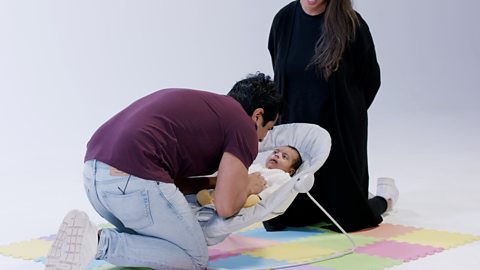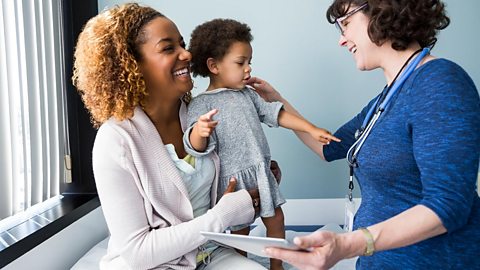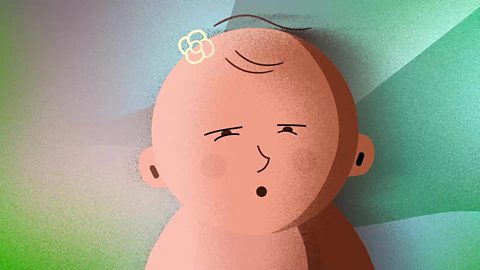Your childãs eyes are a gateway to their learning.
ãBeing able to see clearly is great for a childãs overall development,ã explains Dr Paramdeep Bilkhu MCOptom, Clinical Advisor for . ãããIt helps them discover and learn about the world around them. So it's really important that they have healthy eyes.ã
A recent study by The College of Optometrists found that nearly a quarter of adults had never taken their child for a sight test.
Even though most toddlers and young children donãt need to wear glasses, it is important to be able to recognise the early signs of a vision problem, so you can get help if your child needs it.
ãWhen eye problems are identified and treated at a younger age, they tend to have much better outcomes,ã says Paramdeep. ãIf they're left unchecked and undetected, a child can potentially have reduced vision in one or both eyes.ã
Below, weãve listed some things that suggest your child might be struggling with their vision. We have also included some tips to help them feel comfortable and confident if they have to wear glasses.
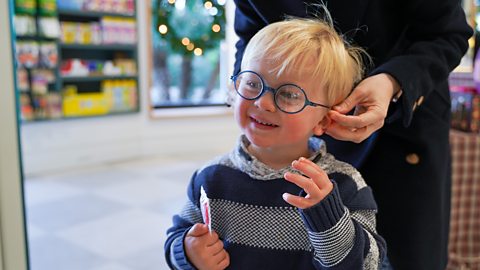
Signs your child needs glasses
Spotting the signs of a vision problem in your baby or toddler is extremely important, as they canãt communicate with you if they are struggling.
Here are some things to look out for:
Signs of vision problems in babies 0-6 months
ãAt about six weeks old, most babies should normally be able to follow something colourful, like a toy, or something really interesting like a pattern with their eyes,ã explains Paramdeep.
Newborn babies can only really focus on things a short distance away from them, so donãt worry if they struggle to see things across the room at this stage.
ãIf you make a sound, they usually turn their head or their eyes towards where that sound is coming from.ã
If your baby doesnãt seem to respond to these stimuli, or they canãt focus properly on you ã not reacting to your facial expressions or gestures can be a tell-tale sign - that might indicate a problem with their sight or hearing.
At this age, some babiesã eyes temporarily might look in slightly different directions relative to one another, commonly known as a ãsquintã. This is normal and shouldnãt be a concern.
ãBut if the squint seems to be there all the time, that needs to be investigated, and you should make an appointment to see your optometrist as most cases can be treated very successfully,ã says Paramdeep.
Try this quick vision check with your baby
A really simple thing that parents can try is to cover up each of their baby's eyes in turn.
ãIf they object or become distressed - such as by crying or making distressing sounds - this can indicate they potentially have a vision problem such as a lazy eye.ã
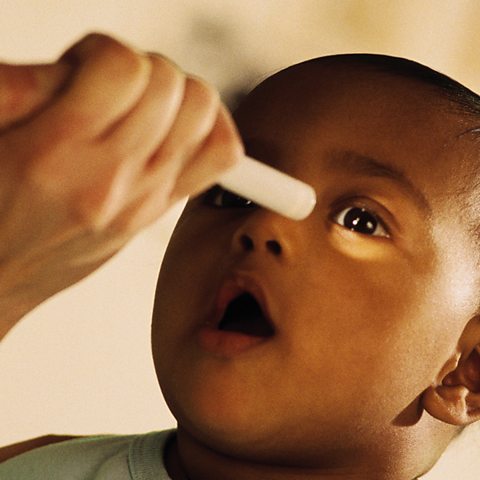
Signs of vision problems in babies 6 months or older
ãAt six months of age, your babyãs eyes should be fully developed,ã explains Paramdeep. ãThis means they will be able to judge depth and 3D shapes. They should also be able to focus on objects you point out that are further away.ã
If your child struggles to focus on these objects or canãt follow you with their eyes as you move around a room, this might suggest an issue.
General signs of vision problems in toddlers and children:
- Having one eye that turns inwards or outwards (a squint)
- Rubbing their eyes excessively
- Clumsiness or poor hand-to-eye coordination
- Avoiding activities like reading, writing, or drawing
- Not enjoying up-close activities
- Sitting very close to the TV or holding books or objects close to their face
- Screwing up their eyes when they read or watch TV
- Having behaviour or concentration problems at home or school
- Complaining about double vision, blurred vision or headaches
Paramdeep also adds that there are two key things all parents should look out for.
ãLook out for an eye turn (squint) that remains there permanently or intermittently. This should alert you to get their eyes checked because this is a known cause of lazy eye.ã A squint or lazy eye often runs in families, and may not be obvious.
Viewing photographs with the flash on can help you spot signs of eye health problems.

ãYou might notice that the red glow from one of your childãs pupils is less bright than the other. This could be a sign of a high prescription in one eye which can also cause lazy eye.ã
If you notice a white glow or glimmer in the pupil, this might also be a sign of a problem, but this is very rare.
ãWhile both these things are uncommon , itãs important to make an appointment with your local optometrist as soon as possible if you do spot them.ã

What age should I get my child's eyes tested?
Sight tests for all children under 16 across the UK are paid for by the NHS. And for children aged 4 to 5, there may be avision screening available at their school, but this only checks for some common vision problems.
If a vision screening is not available in your local area, you can take them to see your local optometrist for a sight test, where a detailed eye examination can pick up vision or eye health problems.
ãIf a parent has any concerns about their childãs eyes, take them to see their local optometrist as soon as you can to get their eyes examined, no matter their age.ã
There is no age barrier, or communication barrier when having a sight test.
ãChildren don't need to be able to read or talk to have their eyes examined. Optometrists are trained to perform a sight test on children of any age,ã explains Paramdeep.
ãIf a child is non-verbal, or has learning difficulties, optometrists should be able to communicate to them on an appropriate level and be able to administer some of the tests which are clinically necessary and suitable for their age group.ã
Promoting good eye health
You can look after your eyes in the same way that you look after your body.
ãHaving an active lifestyle, making sure children eat a balanced diet and getting regular eye checks are the main things you can do to protect your childãs vision,ã explains Paramdeep.
ãSpending more time outdoors may help prevent or delay any onset of short-sightedness (myopia) in children at risk of developing myopia. So we would encourage families with a history of myopia to spend more time outside in a healthy, balanced way. So not only is being active good for general health, it is good for your eyes.ã
If you and your child are spending a lot of time in the sun, itãs important to make sure youãre protecting your eyes with good quality sunglasses with UV protection. You can also protect your eyes by wearing a wide brimmed hat or sun visor in bright conditions.
ãMake sure your sunglasses carry the CE or UKCA mark because this shows they are made to the standards (British Standard BS EN ISO 12312-1:2013) required to protect against harmful UV light.ã
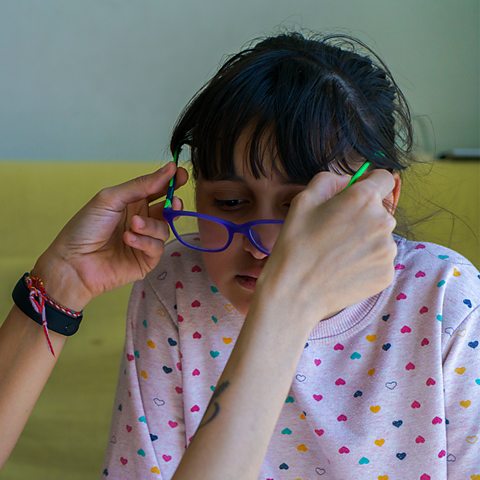
How can I encourage my child to wear their glasses?
You might find that your child seems happy with their glasses when they are getting them fitted but once youãre at home, they might not want to keep them on.
Or if you have a baby who needs glasses, you might struggle with them reaching or grabbing at them frequently.
ãSome children may become distressed by wearing glasses,ã explains Paramdeep. ãThis is usually because they can be uncomfortable to wear if not fitted properly.ã
ãSo itãs really important that the glasses are fitted by a qualified eye care professional, such as an optometrist or a dispensing optician, to make sure those glasses are suitable and as comfortable as possible, and make sure theyãre worn safely and correctly.ã
Here are some tips to help your child keep their glasses on:
Helping babies keep their glasses on
- Try pulling out a fun toy to distract them when putting their glasses on. This will help them associate their glasses with having fun.
- You can try getting a strap for their glasses, which will fit over their head like a pair of goggles instead of going around their ears.
- Talk to your optometrist or dispensing optician about loops or ear grips to stop glasses from falling off.
Helping toddlers and older children keep their glasses on
- Point out any characters from books or television who also wear glasses.
- If your child is old enough, get them involved in picking out the design or frame.
- Be positive about the glasses and your childãs appearance in them.
- Create a star chart to help them associate wearing their glasses with good behaviour.
If you are struggling with your child keeping their glasses on, there is another solution.
ãChildren can also wear contact lenses as an alternative,ã explains Paramdeep. ãThere are lots of studies that show that children of all ages, particularly when theyãre responsible and dextrous enough to place them in and out on their own, are able to wear lenses safely. It is very important to always follow your optometristsã instructions on contact lens care and hand hygiene, and attend for regular check-ups.ã
So there really shouldn't be a barrier in terms of making children see as well as they can.

Find out more about your childãs eye health
- Check out the College of Optometrists' parent-facing website, to find out more about childrenãs eye health.
- Visit the NHS website to get information on .
- Have a look at The Association of Optometristsã childrenãs eye health campaign, , which is full of resources for parents to help keep young eyes healthy.

